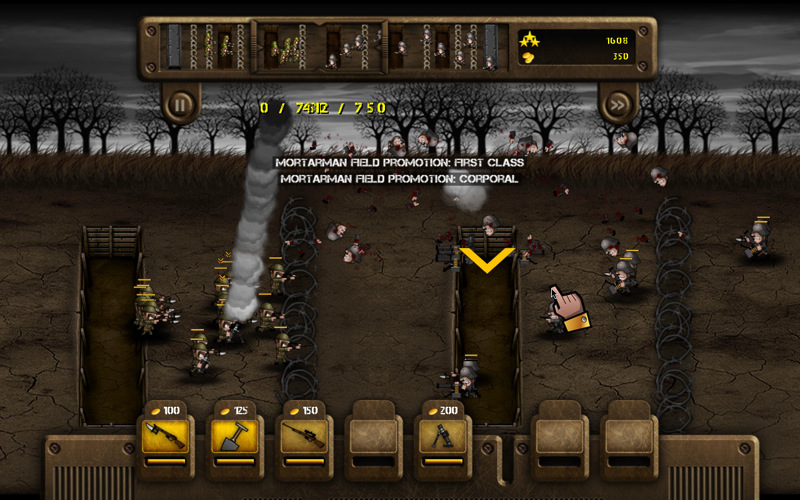
Sensitive listening devices that could detect the sounds of digging were a crucial method of defense against these underground incursions. Once enemy positions were undermined, huge amounts of explosives would be planted and detonated as part preparation for an overland charge. īecause attacking an entrenched enemy was so difficult, tunnel warfare became a major effort during the war. Pillboxes could be placed across a battlefield with interlocking fields of fire. Trench warfare led to the development of the concrete pill box, a small, hardened blockhouse that could be used to deliver machine gun fire. Probably the most important was the introduction of high explosive shells, which dramatically increased the lethality of artillery over the 19th-century equivalents. The hand grenade, long used in crude form, developed rapidly as an aid in attacking trenches. The application of infantry rifles, rifled artillery with hydraulic recoil mechanisms, barbed wire, zigzag trenches and machine guns made it difficult or nearly impossible to cross defended ground. The new metallurgical and chemical industries created new firepower that briefly simplified defense before novel approaches to attack evolved.

Tactical reorganizations (such as shifting the focus of command from the 100+ man company to the 10+ man squad) went hand-in-hand with armoured cars, the first submachine guns, and automatic rifles that a single individual soldier could carry and use.

On land, the quick descent into trench warfare came as a surprise, and only in the final year of the war did the major armies make effective steps in revolutionizing matters of command and control and tactics to adapt to the modern battlefield and start to harness the myriad new technologies to effective military purposes. The earlier years of the First World War could be characterized as a clash of 20th-century technology with 19th-century military science creating ineffective battles with huge numbers of casualties on both sides. Military technology of the time included important innovations in machine guns, grenades, and artillery, along with essentially new weapons such as submarines, poison gas, warplanes and tanks.

World War I weapons included types standardised and improved over the preceding period, together with some newly developed types using innovative technology and a number of improvised weapons used in trench warfare. British improvised weapons in Fort Reuenthal


 0 kommentar(er)
0 kommentar(er)
